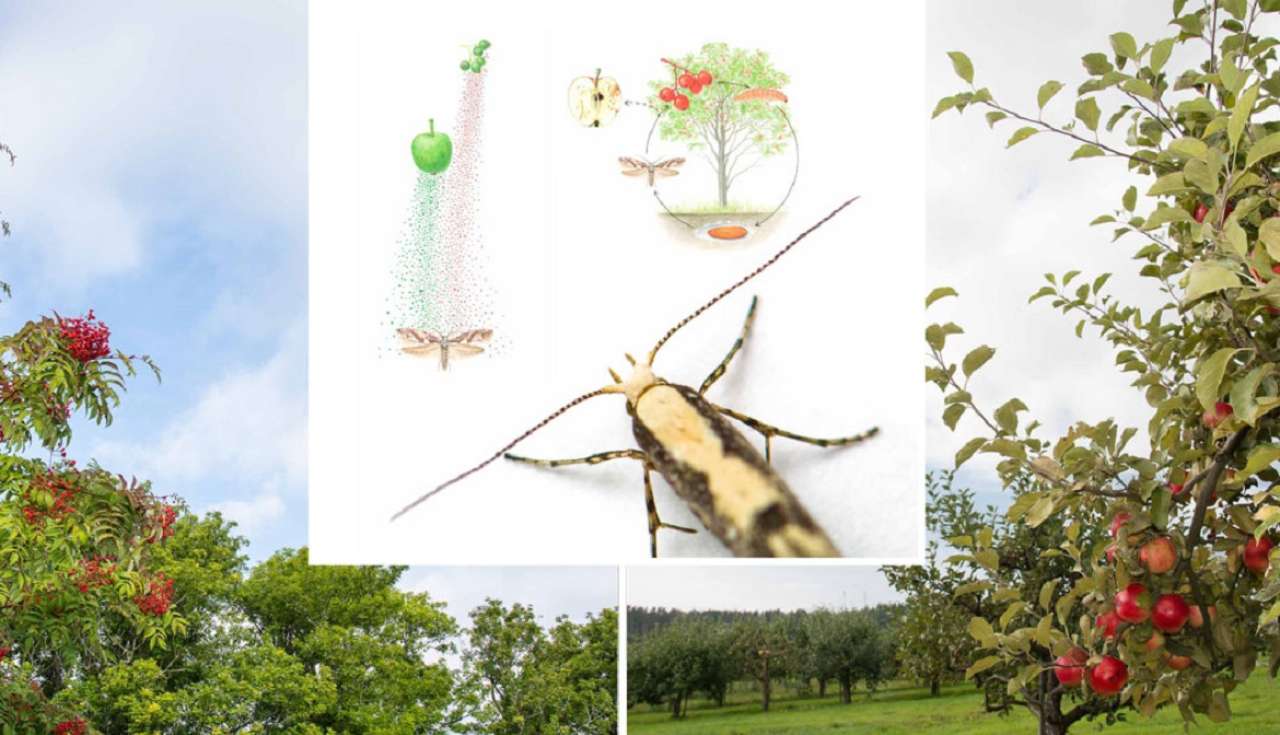Monitoring and decision support with plant volatiles

Apple fruit moth Argyresthia conjugella with its host plants rowan and apple
Photo/artwork: Erling Fløistad
The apple fruit moth attacks apple if there is lack of rowan. With traps, which smell for an apple fruit moth like rowan, are we able to monitor populations and time for attack. This information is used by the Norwegian Agricultural Extension Service (NLR) and farmers to decide if they need to perform pest management.
As most insects have apple fruit moths an excellent sense of smell. Females of this species are using their sense of smell to find rowan plants when it is time to lay eggs, as rowan is the optimal place to grow up for the next generation.
Apple fruit moth always prefers rowan for egg laying and uses the odour of rowan to find the correct host plant. Only if no rowan is available, the apple fruit moth is looking for its’ second choice, for apple.
Apple and rowan plants have a similar smell, but it is still different enough that an apple fruit moth can smell the difference.
At NIBIO we have developed an odour which smells for the apple fruit moth like rowan. This odour can be used in traps in apple orchards to help the farmer to estimate the extent of possible attack of the apple fruit moth. The aim of using such plant volatile – traps is to reduce the use of traditional chemical pesticides in agriculture.
Contacts

Publications
Abstract
No abstract has been registered
